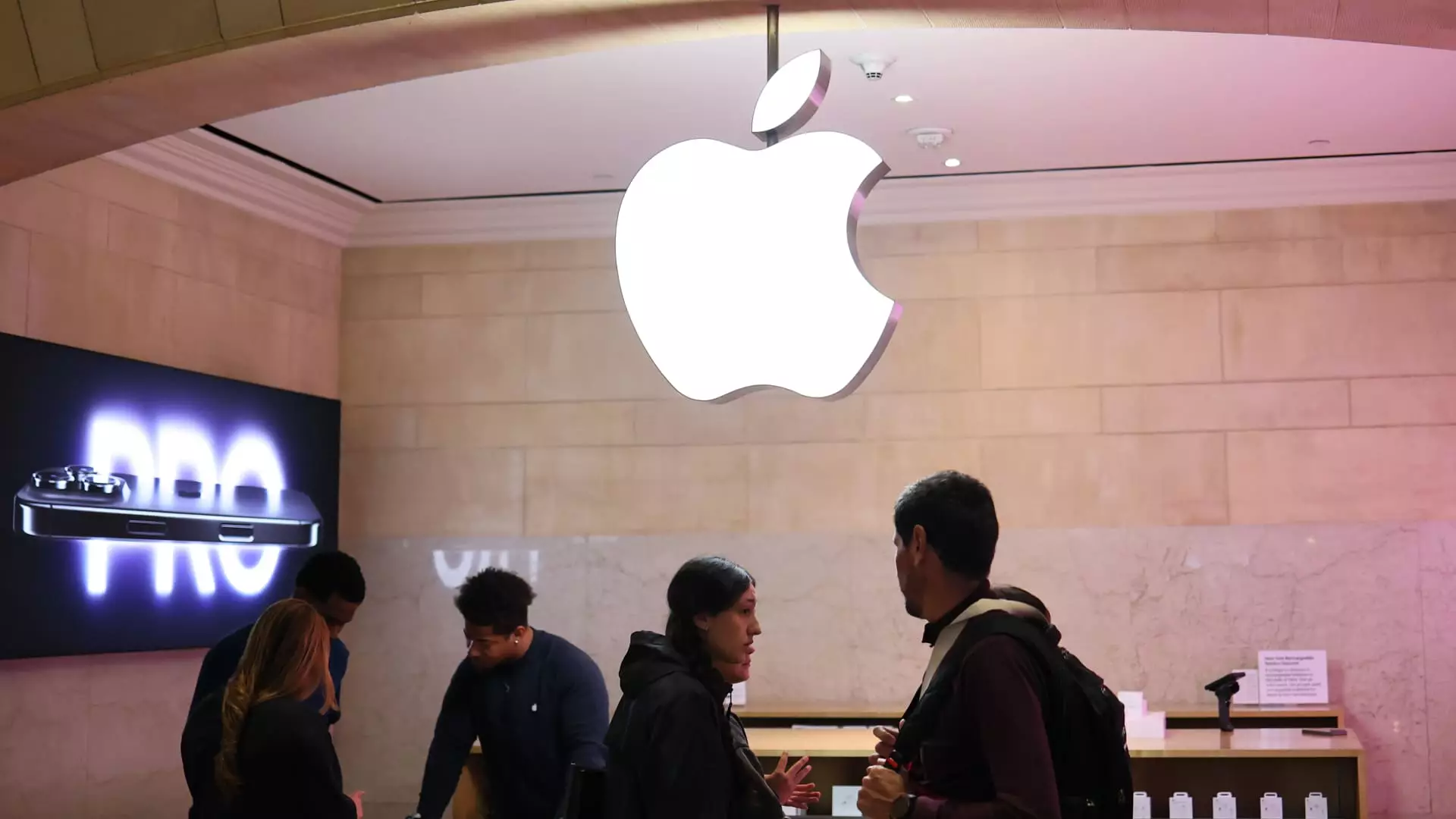Apple Inc., a once-celebrated titan of the technology sector, now finds itself in the crosshairs of an escalating tariff war ignited by President Trump’s administration. While the larger narrative of technology’s role in the global economy continues to evolve, one cannot ignore the immediate fallout of these protective measures on Apple’s financial outlook. As investors begin to re-evaluate the risks associated with this iconic brand, forecasts like those from Wedbush’s Dan Ives serve as unsettling reminders of the consequential relationship between politics and corporate financial health.
The stark reduction in Ives’ 12-month price target for Apple—from $325 to $250—highlights the precarious situation the company faces. Such a hefty 23% cut implies a future that may not shine as brightly as many once anticipated, illustrating that the current political environment poses adverse effects that extend beyond mere tariffs. With approximately 90% of iPhones assembled in China, it’s clear that tariffs could turn Apple’s profit margins into jeopardy overnight, exacerbating financial instability for the company and its broader ecosystem.
The Squeeze on U.S. Manufacturing and Consumer Price Points
Harsh economic realities compel a reevaluation of Apple’s ambitious pledges toward American manufacturing. While the company has made flashy announcements regarding the investment of over $500 billion in domestic operations, the grim truth remains that scaling back on reliance on Chinese manufacturing is neither practical nor feasible in the short term. It would take an enormous investment—estimated at $30 billion—and three years to even begin relocating a fraction of production away from China. Indeed, this kind of transition presents operational as well as financial hurdles, creating a sense of urgency for Apple and other tech firms to strategize effectively amidst uncertainty.
The ramifications for U.S. consumers could also be dire. Apple’s products, typically regarded for their high quality, may no longer be available at accessible price points. As tariffs potentially drive iPhone prices upward by considerable margins, the notion that a consumer can purchase a top-tier smartphone for around $1,000 becomes increasingly implausible. The assumption that Apple can absorb these costs without significant repercussions is a dangerous oversimplification. The demand for iPhones and other products could falter as middle-class consumers grapple with inflated price tags, further complicating Apple’s predicament.
The Disheartening Forecast for Apple’s Market Position
While the stock market remains rife with bull sentiments towards Apple—nearly two-thirds of analysts maintaining “buy” ratings—it seems increasingly disconnected from the underlying reality of the company’s potential market trajectory. With shares plummeting by significant margins in April alone, one wonders whether the optimism held by major financial institutions is truly warranted under such stark geopolitical pressures. Ives’ assertion that current tariffs could push the U.S. tech landscape back a decade is provocative, raising questions about the stability and sustainability of companies heavily reliant on foreign manufacturing.
Moreover, the broader implication of this tariff environment extends beyond Apple; it creates a chilling effect on the tech industry at large, hampering innovation and international collaboration. As the leading force in the sector, Apple’s misfortunes could foreshadow a ripple effect felt across smaller tech firms and startups that rely on partnerships and shared resources. The fragility of such an ecosystem, underpinned by such extreme tariff measures, raises serious concerns for American technological leadership on the global stage.
The Uncertainty That Breeds Consumer Reluctance
The ambiguity surrounding future tariffs not only hampers financial guidance from Apple but also leads to a loss of consumer confidence. A climate of uncertainty is toxic for consumer spending; when potential buyers do not know how much they will have to pay for technologically advanced products, they may naturally hesitate to make purchases, leading to demand erosion. The market can ill afford a scenario where hate towards Chinese imports becomes intertwined with patriotic sentiment that pits U.S. consumers against their own interests. Such an unraveling could mark the beginning of profound challenges for a company that has long thrived on consumer loyalty.
In navigating this turbulent period, Apple, like many tech giants, must forge a path that balances political realities with the operational agility necessary to thrive. If the company fails to adapt quickly to these fundamental shifts, it risks losing the prime position it has enjoyed in both the stock market and the hearts of consumers.


Leave a Reply